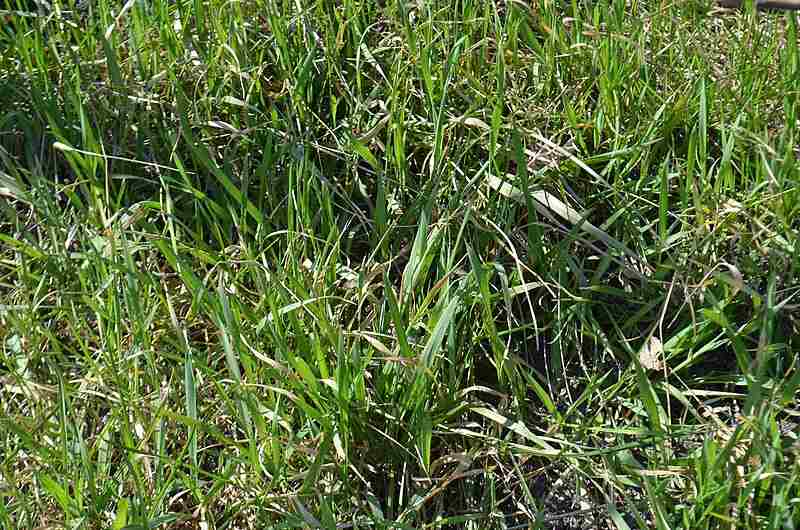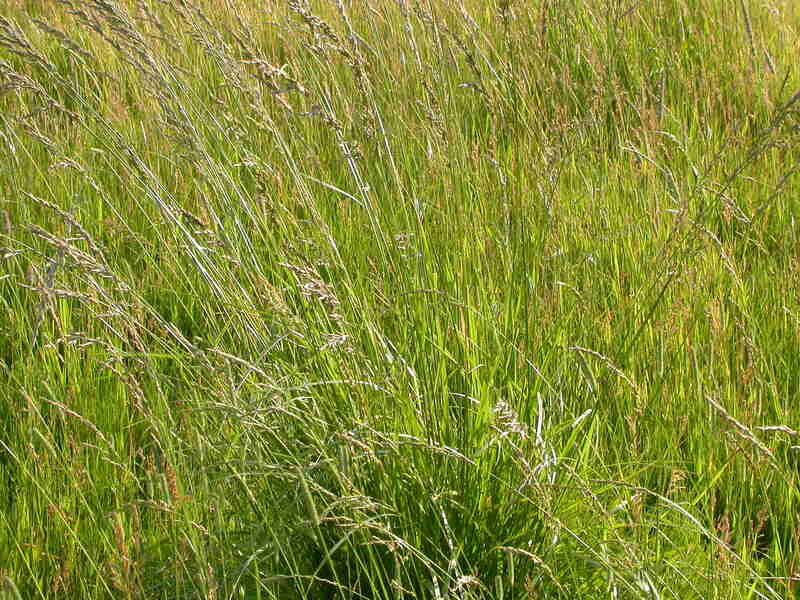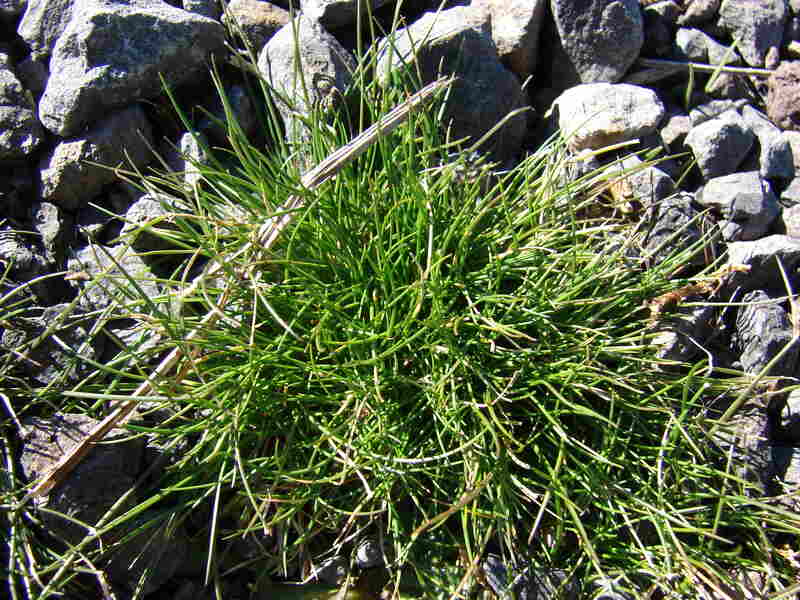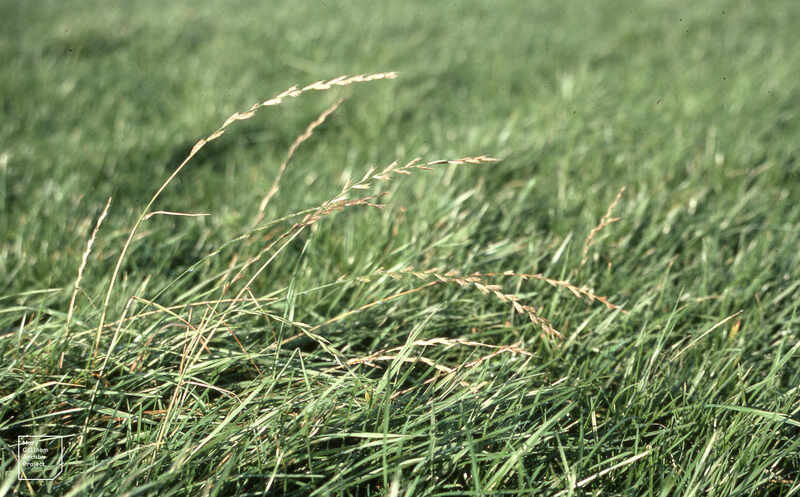Best Grass Types for Peoria, Illinois
BY AMANDA SHIFFLER | APRIL 6TH, 2023 | ILLINOIS, LAWN CARE, PEORIANestled on the Illinois river, Peoria is located about two hours outside Chicago, in the central part of the state. Even though both cities are located in the same state and sit on the water, Peoria has marked differences from the Windy City.
We get it, though. You’re looking for lawn care information geared towards your specific area instead of reading up on Chicago-based recommendations. Especially when it comes to important decisions such as reseeding bare spots in their lawn or landscaping new construction.
With that in mind, we’ve put together this guide on the best turfgrass for Peoria.
In this article:
- 4 Best Grasses for Peoria
- What You Need to Know About Cool-Season Grasses
- Considerations for Choosing a Grass
- Choosing a Grass Seed Mix
- When to Plant Grass Seed
- FAQ
The Best Types of Grass for Residents in Peoria, Illinois
Kentucky Bluegrass (Poa pratensis)

Photo Credit: Ethan2039 / Wikimedia Commons / CC BY-SA 4.0
One of the most popular turfgrasses for Central Illinois – and much of the Midwest – is Kentucky bluegrass (KBG). This thick, dense grass is the most winter-hardy cool-season grass and is the first choice of many commercial sod growers.
Kentucky bluegrass thrives in full sun but will tolerate partial shade. It spreads by underground stems known as rhizomes that help it recover from foot traffic well but lead to a shorter root system, making KBG only moderately drought tolerant.
The rhizomes also allow the grass to fill in damaged or bare spots quickly without needing to be overseeded. This is beneficial as Ketucky bluegrass seed is slower than other cool-season grasses to germinate and establish.
However, keeping your lawn a beautiful shade of deep, dark green requires more maintenance and patience than other cool-season grasses. You can’t forget to fertilize, water, and mow it!
- Classification: Cool-season grass
- Color/Texture: Dark green, medium texture
- Shade Tolerance: Low to moderate
- Drought Tolerance: Moderate
- Foot Traffic Tolerance: Moderate (rhizomes help it recover well)
- Maintenance Needs: High
- Mowing Height: 2 ½ to 3 inches
- Spreads by: Rhizomes
- Potential for Disease: Moderate; susceptible to several different diseases, including necrotic ring spot and summer patch
Note: For more information on Kentucky bluegrass, check out LawnLove’s guide.
Tall Fescue (Festuca arundinacea)

Tall Fescue
Photo Credit: Matt Lavin / Flickr / CC BY-SA 2.0
Tall fescue stands out from other cool-season grasses because of its growth habit. It is known as a bunchgrass, growing upright in clumps that spread primarily through vertical shoots known as tillers that branch off from the base of the plant. The grass blades are wide, coarse, and medium to dark green.
It is an ideal low-maintenance grass for Peoria, suited for non-irrigated lawns in full sun or partial shade. Tall fescue grass seed germinates more quickly than Kentucky bluegrass, and with roots growing 2-3’ deep in the soil, it has superior heat and drought tolerance. This tough turf is mostly disease-resistant and is great for high-traffic play areas.
Since it does spread by tillers, it may require reseeding when bare spots develop.
- Classification: Cool-season grass
- Color/Texture: Medium to dark green, coarse texture
- Shade Tolerance: Moderate
- Drought Tolerance: High
- Foot Traffic Tolerance: High (but doesn’t recover well and will require overseeding)
- Maintenance Needs: Low (but requires frequent mowing)
- Mowing Height: 3 ½ to 4 inches
- Spreads by: Bunch-type grass
- Potential for Disease: Low; susceptible to brown patch
Note: For more information on tall fescue, check out LawnLove’s guide.
Fine Fescue (Festuca spp.)

Fine-leaf Fescue
Photo Credit: Forest and Kim Starr / Flickr / CC BY 2.0
Another choice for Peoria is fine fescue, a group of five turf grasses with similar looking narrow leaves: chewings fescue, hard fescue, sheep fescue, slender creeping red fescue, and strong creeping red fescue. Homeowners love their soft fine texture, shade tolerance, ability to withstand moderate foot traffic, and low maintenance requirements.
These grasses tolerate low soil fertility; even on poor soils, they don’t need much fertilizer. You may see a decline if you apply fertilizer too often. They do, however, prefer well-drained soil.
Strong creeping red, hard, and chewings fescues are popular across Illinois. Creeping red is the only type that spreads by rhizomes; the others are bunchgrasses. Because of this, the bunch types will need reseeding when bare spots arise.
Fine fescues do well when mixed with Kentucky bluegrass or perennial ryegrass, especially in yards with partial shade. It can stand alone in partial shade areas, but a cool-season grass blend is more popular for the entire lawn.
- Classification: Cool-season grass
- Color/Texture: Medium to dark green, soft texture
- Shade Tolerance: High
- Drought Tolerance: High
- Foot Traffic Tolerance: Moderate
- Maintenance Needs: Low
- Mowing Height: 1 to 3 inches
- Spreads by: Bunch-type grass, except for creeping red fescues, which have rhizomes
- Potential for Disease: Moderate (some species have high resistance while others have low resistance); susceptible to summer patch, snow molds, red thread, and dollar spot
Note: For more information on fine fescue, check out LawnLove’s guide.
Perennial Ryegrass (Lolium perenne)

Perennial Ryegrass
Photo Credit: Dr Mary Gillham Archive Project / Flickr / CC BY 2.0
No one wants to wait for their grass seed to establish, which is why perennial ryegrass is so popular for temporary and permanent lawns. Seeds germinate in less than a week, providing a beautiful, medium to dark green lawn.
Perennial ryegrass has excellent wear tolerance, making it great for homes with children and pets even though, as a bunchgrass, it can’t self-repair. It prefers full sun but will tolerate areas of partial shade. A waxy coating on the blades makes lawn stripes stand out sharply.
While perennial ryegrass can be grown as a monostand, many people mix it with other grass species, such as Kentucky bluegrass (for improved cold tolerance) and fine fescue (for improved shade tolerance). It is the least cold-tolerant of all the cool-season grasses and may thin over time with prolonged exposure to temperatures below 30°F.
One drawback of perennial ryegrass is that it requires a good bit of maintenance. If you dislike mowing or watering your lawn, perennial ryegrass may not be a good choice. On a positive note, this grass tolerates foot traffic well.
- Classification: Cool-season grass
- Color/Texture: Dark green, fine texture
- Shade Tolerance: Moderate
- Drought Tolerance: Moderate
- Foot Traffic Tolerance: High, but as a bunch-type grass, it has little ability to recuperate, and damaged grass must be overseeded
- Maintenance Needs: Moderate
- Mowing Height: 1 ½ to 2 ½ inches
- Spreads by: Bunch-type grass
- Potential for Disease: Moderate; susceptible to gray leaf spot and rust
Note: For more information on perennial ryegrass, check out LawnLove’s guide.
Understanding Cool-Season Grasses
Turfgrasses are classified as either cool-season or warm-season grasses, and it’s essential to understand the difference between them and ensure you’re planting the right type for your climate.
In the Northern United States, most lawns are cool-season grasses. These grass types have adapted to colder temperatures. They start growing when temperatures are just above freezing (40 to 42°F) in early to mid-spring and stay green well into October or November, when they go dormant to survive being buried under snow.
Cool-season grasses grow the most, producing the most biomass in the spring and late fall when soil and air temperatures are 65 to 75°F. Since they have adapted to survive below-zero climates, they aren’t as keen about hot summers. They do well when temperatures are milder but need more water when it’s hot to stay green.
Conversely, warm-season grasses are better adapted to Southern climates and the summer heat. They are more drought-tolerant and grow best when temperatures soar but don’t grow as well in cooler conditions. Because of this, they have a shorter period when they are actively growing and don’t stay green as long.
Considerations When Choosing a Grass Type
When it comes to deciding between the different types, you have to consider factors that are specific to your yard.
- Sun Exposure
- Foot Traffic
- Maintenance Requirements
- Disease Resistance
How Much Sun Does Your Yard Get
When choosing a grass type for your Peoria yard, picking one that thrives in the space is essential.
Is your yard free of big trees and isn’t shaded by neighboring buildings, so it gets more than 6-8 hours of sun daily? If so, you need grass that grows in full sun.
Is your yard shaded by houses, fences, or large, mature trees? Does it get less than four hours of sun each day? If you’ve answered yes to these questions, you need grass that grows in full shade.
Or maybe your yard is a mix of both, and you need grass that thrives in all conditions.
Grass types for full sun:
- Kentucky bluegrass
- Perennial ryegrass
Grass types for a combination of both sun and shade:
- Perennial ryegrass
- Fine fescue
- Tall fescue
Grass types for shade:
- Fine fescue
- Tall fescue
How Much Foot Traffic Can It Handle
Do children or pets play in the yard often? Do you love to throw backyard barbecues with friends and family? Then you’d be better off choosing a turf that tolerates high foot traffic.
If your yard doesn’t see much traffic, you can choose grass with lower tolerance.
Best grass types for high-traffic areas:
- Perennial ryegrass
- Tall fescue
- Grass seed mixes with perennial ryegrass or tall fescue
Best grasses for low to moderate traffic:
- Kentucky bluegrass
- Fine fescue
How Much Maintenance Does it Require
You also need to consider grass maintenance needs when choosing turf for your Peoria lawn. High-maintenance species are great if you like to putter in your yard and enjoy the work. But if you don’t like mowing, watering, and regularly fertilizing your grass, look for a low-maintenance type instead.
High-maintenance grass:
- Kentucky bluegrass
Grasses with a low or moderate maintenance level:
- Fine fescue
- Perennial ryegrass
- Tall fescue
Planting Cool-Season Grass Seed Mixes
Across much of Illinois, and the midwest in general, many homeowners prefer to grow a mixed lawn with two or more species planted together. This genetic diversity provides greater disease resistance, and turf is more adapted to growing in varied conditions such as part-sun or part-shade.
Regardless of the mixture you choose, having the dominant species fit your conditions is best.
When to Plant Grass Seed in Peoria?
The goal with seeding—whether overseeding an existing lawn or starting one from scratch—is to get seed down just before your grass type goes into its active growth period. As mentioned, cool-season grasses grow the most in spring and late fall. So it’s best to plant grass seed between August 15 and October 1, giving your grass about six weeks to grow before the first fall frost.
This timing ensures the conditions are suitable for germination: cool temperatures, warm soils, and frequent rainfall. Your new grass will sprout quickly and proliferate, giving the lawn a great start before temperatures drop. The more robust your grass is going into winter dormancy, the better it will fare.
You may be scratching your head because you thought grass was best planted in spring. To help explain further, it is okay to plant cool-season grass in the spring just as your lawn goes into its spring growth flurry. But it isn’t the best time.
Cool-season grasses are better adapted to handle colder temperatures versus the heat. Therefore, it’s better to plant in the fall as the grass is going dormant for the winter versus in the spring with the stress of summer heat bearing down.
FAQ
When you plant grass seed depends on your climate and the grass you’re growing. In northern regions, it’s best to plant cool-season grasses in the fall once hot summer temperatures have subsided. In the south, the optimal time to plant warm-season grasses is in the late spring as it is warming up.
The big difference between the two grass types is the climate they are best suited for. Warm-season grasses like hot summer temperatures and mild winters without snow; they grow mainly in the southern United States. Cool-season grasses like more temperate summers and can survive harsh winters; they grow primarily in the northern United States.
Fall seeding aims to get the grass seed down at least six weeks before your first fall hard freeze. This gives your grass time to establish before going dormant for the winter. You can plant later, but keep in mind you won’t see any growth when temperatures drop below 40 or 42°F. If you sow after this six-week window, you will still see germination, but the results may be lackluster.
Bermudagrass is a warm-season grass type grown mainly in the southern United States. It prefers hot summers and mild winters, which doesn’t match Illinois’ climate except in some of the southernmost counties of the state that are considered the transition zone. It’s also recommended to avoid growing it because it tends to invade row crops.
Need More Help With Your Peoria Lawn?
Even when you have a lot of information, choosing the right grass for your lawn can still be a big challenge. That’s where WikiLawn comes in to help! We want you to have the best, most beautiful lawn possible and provide assistance to help that happen.
If you need more support, contact our experts.
Main Image Credit: Pixabay